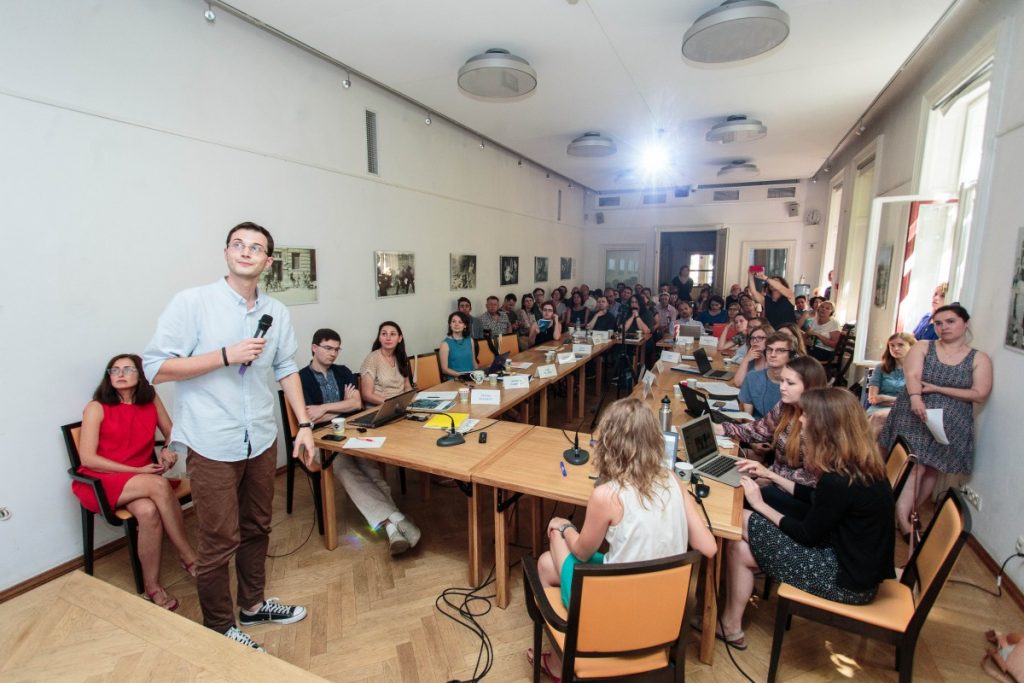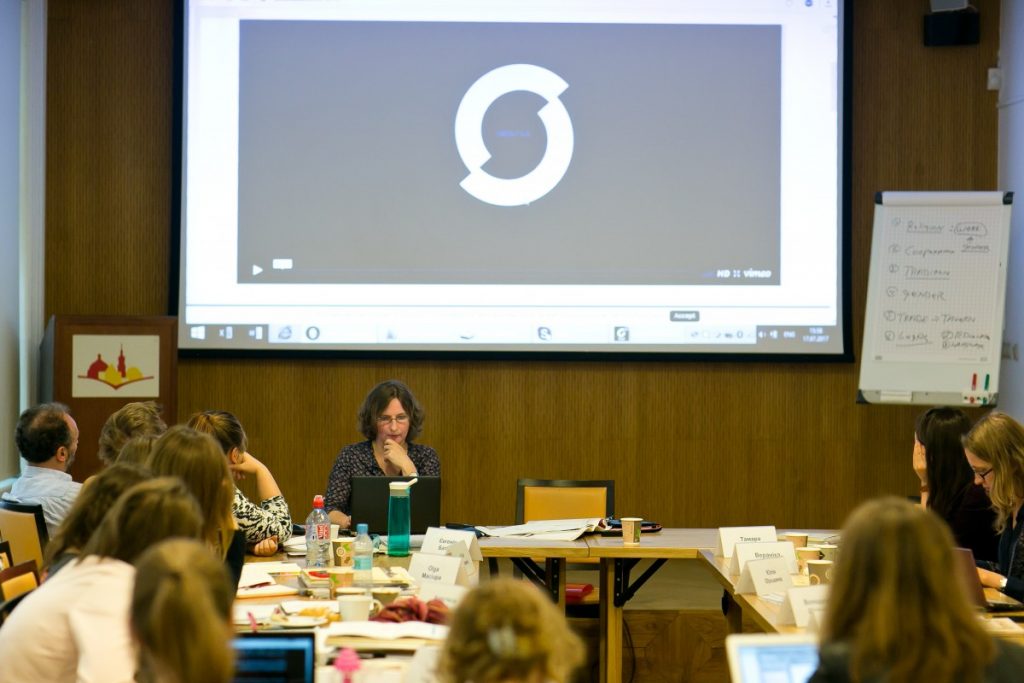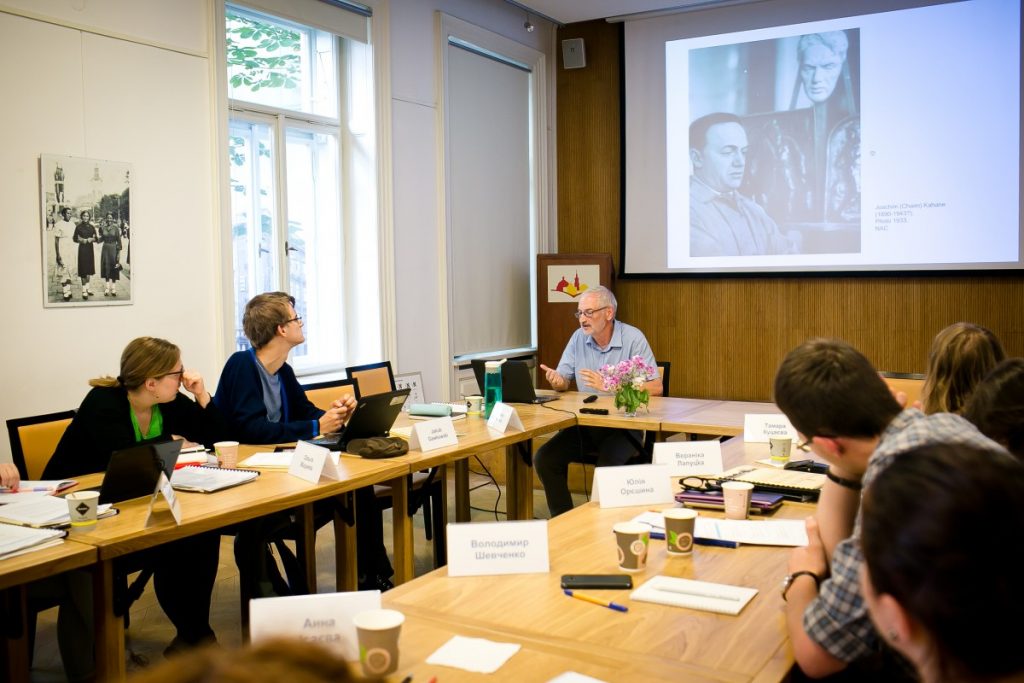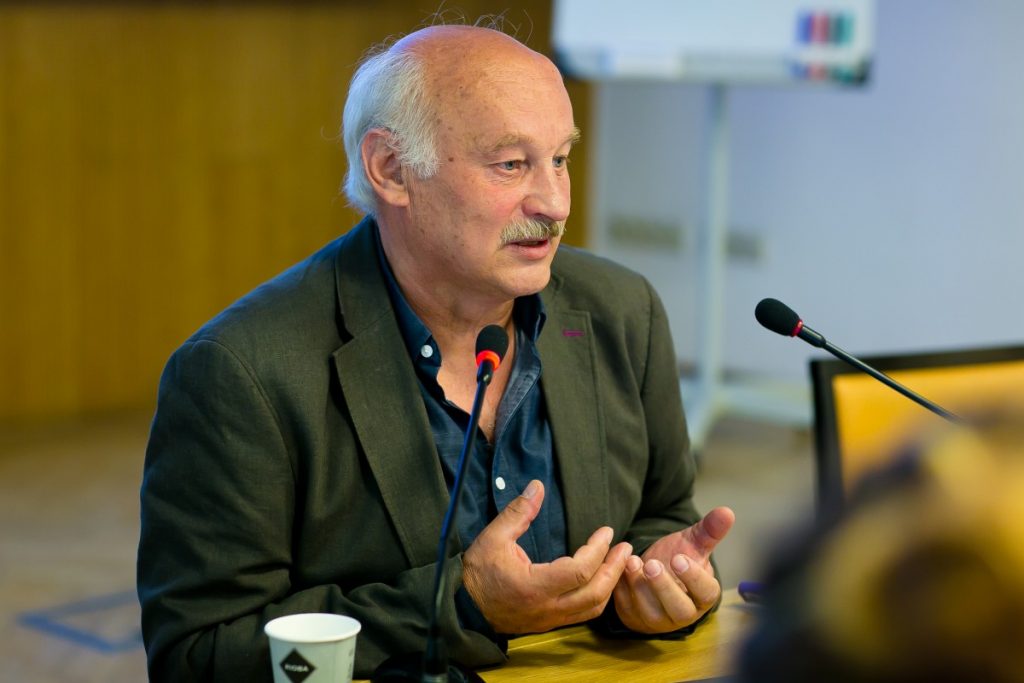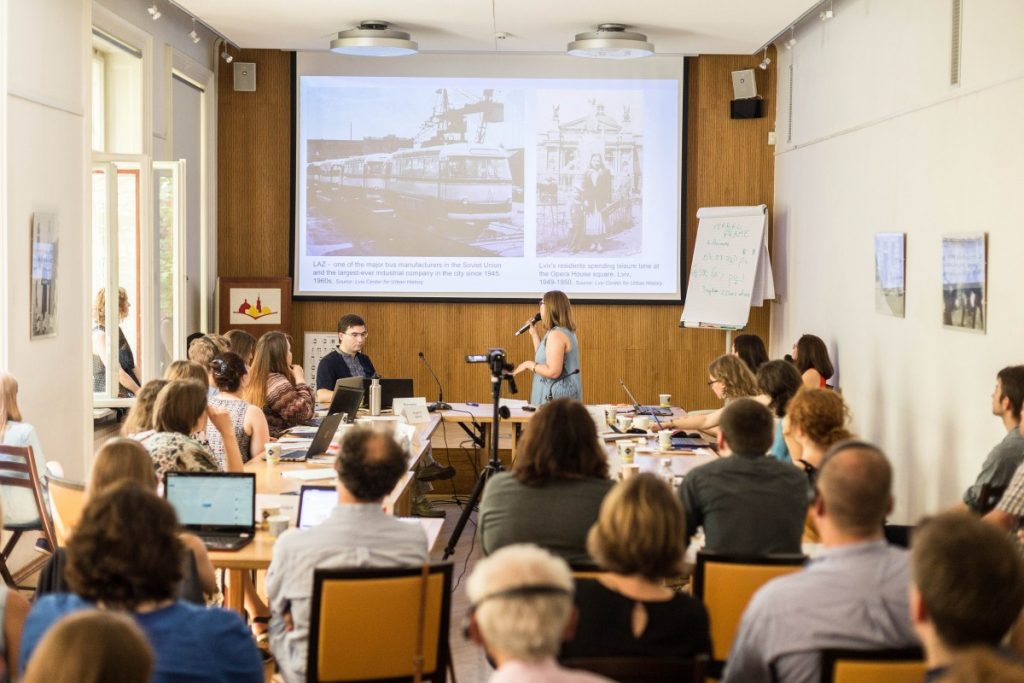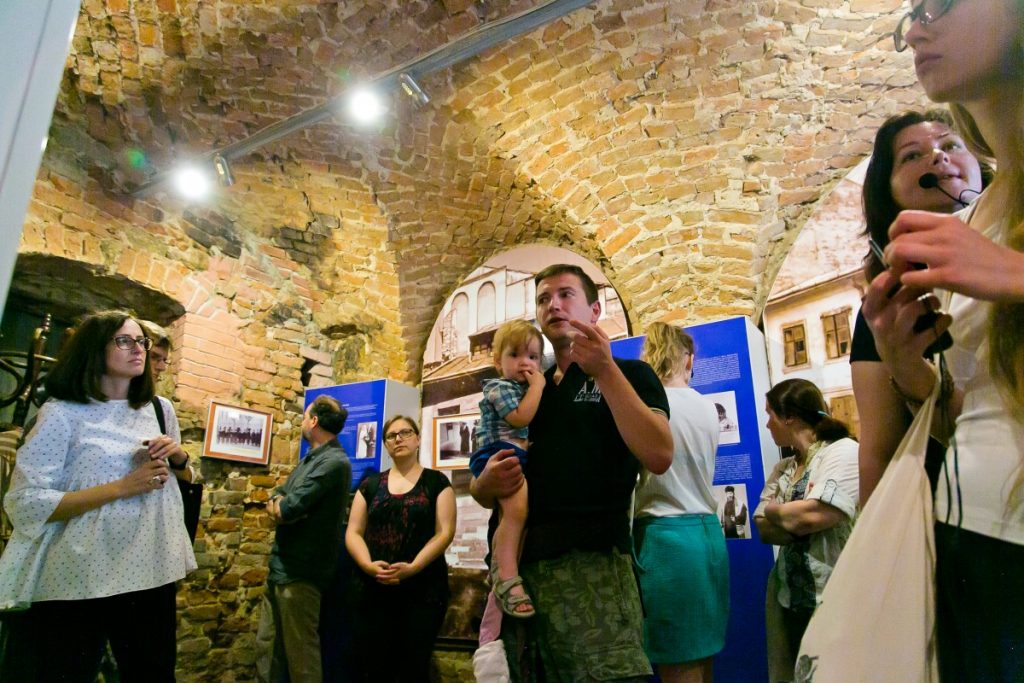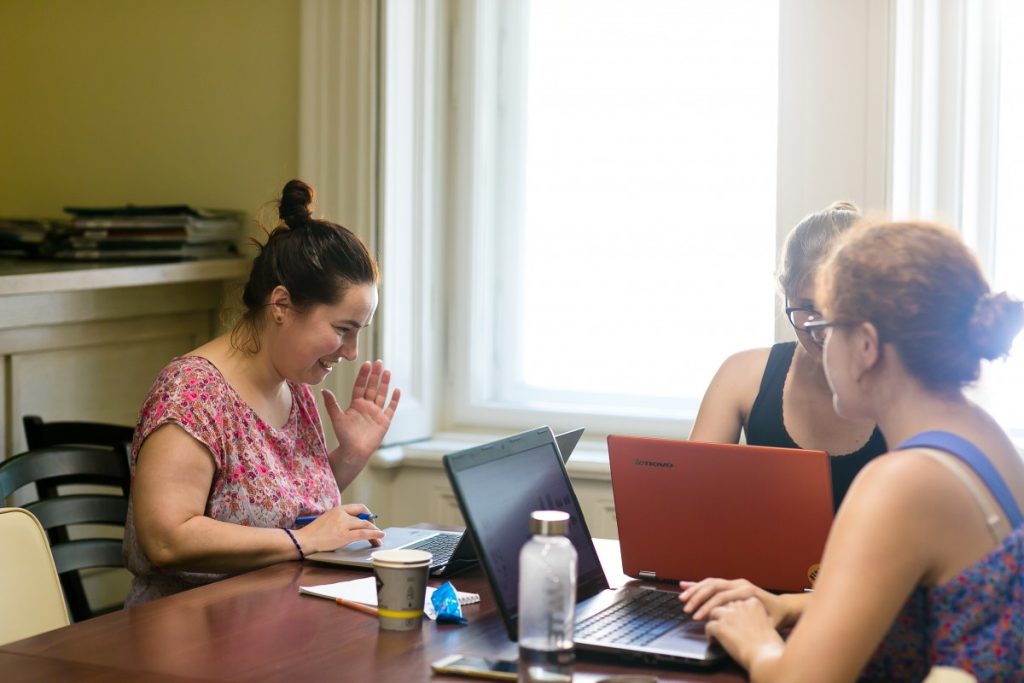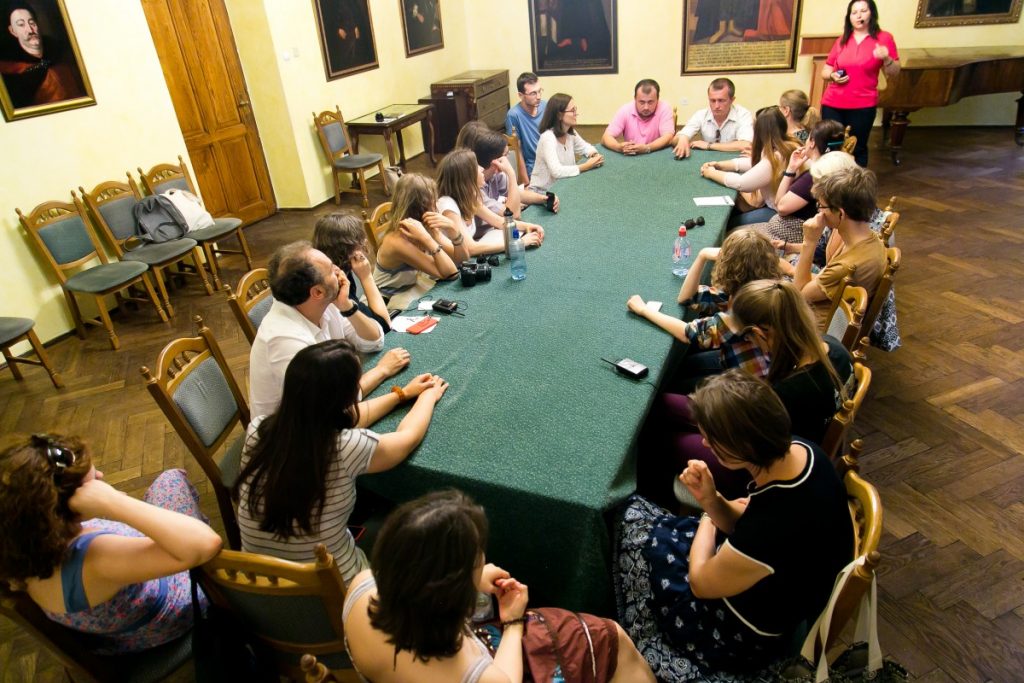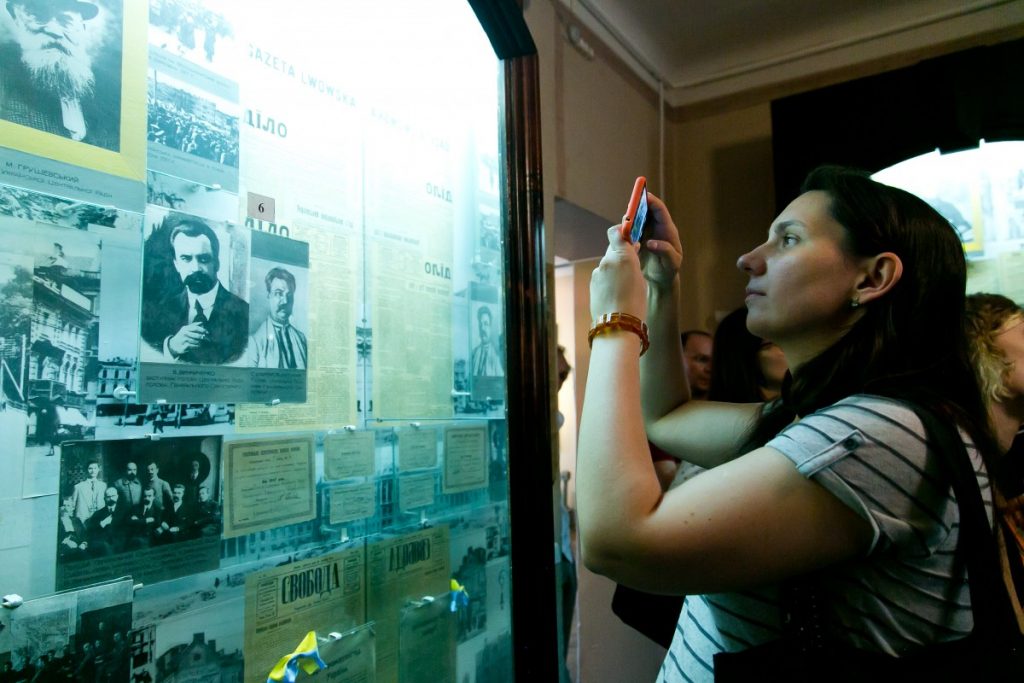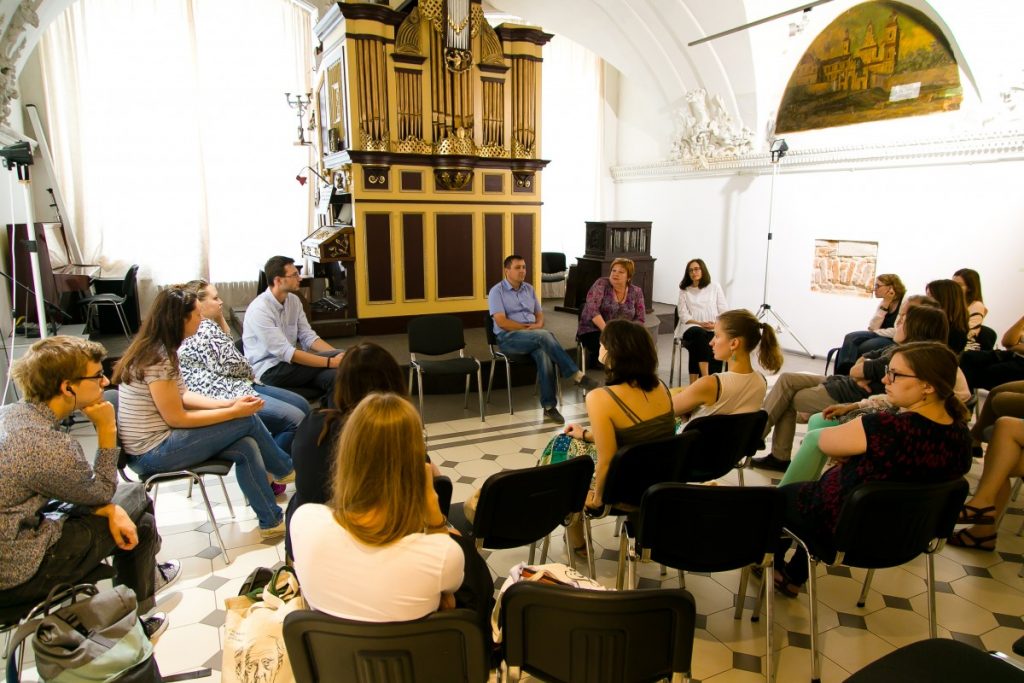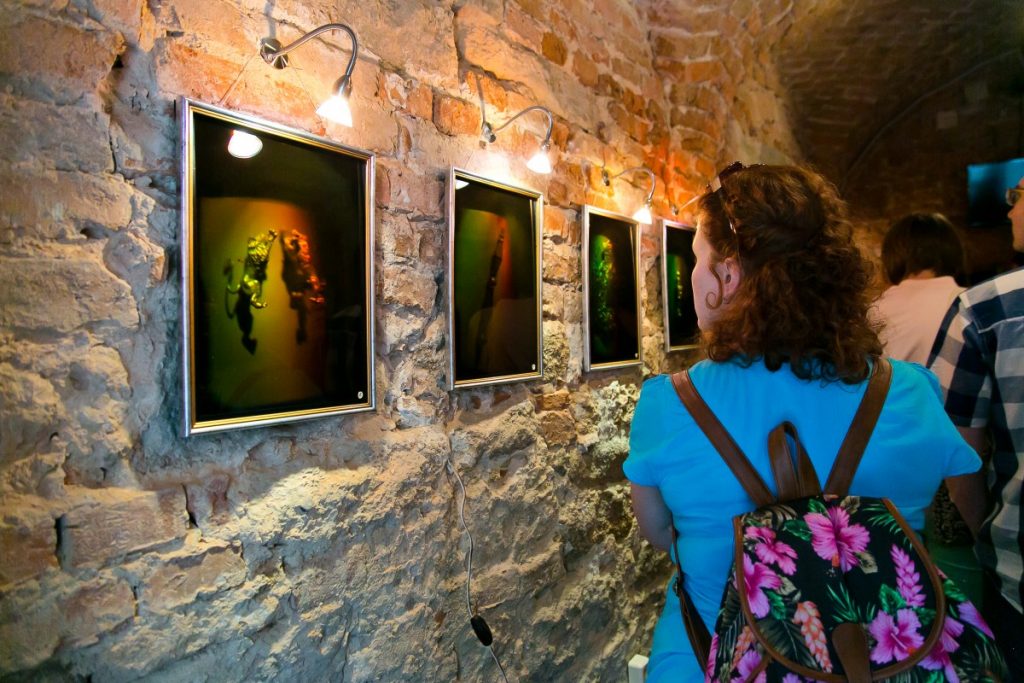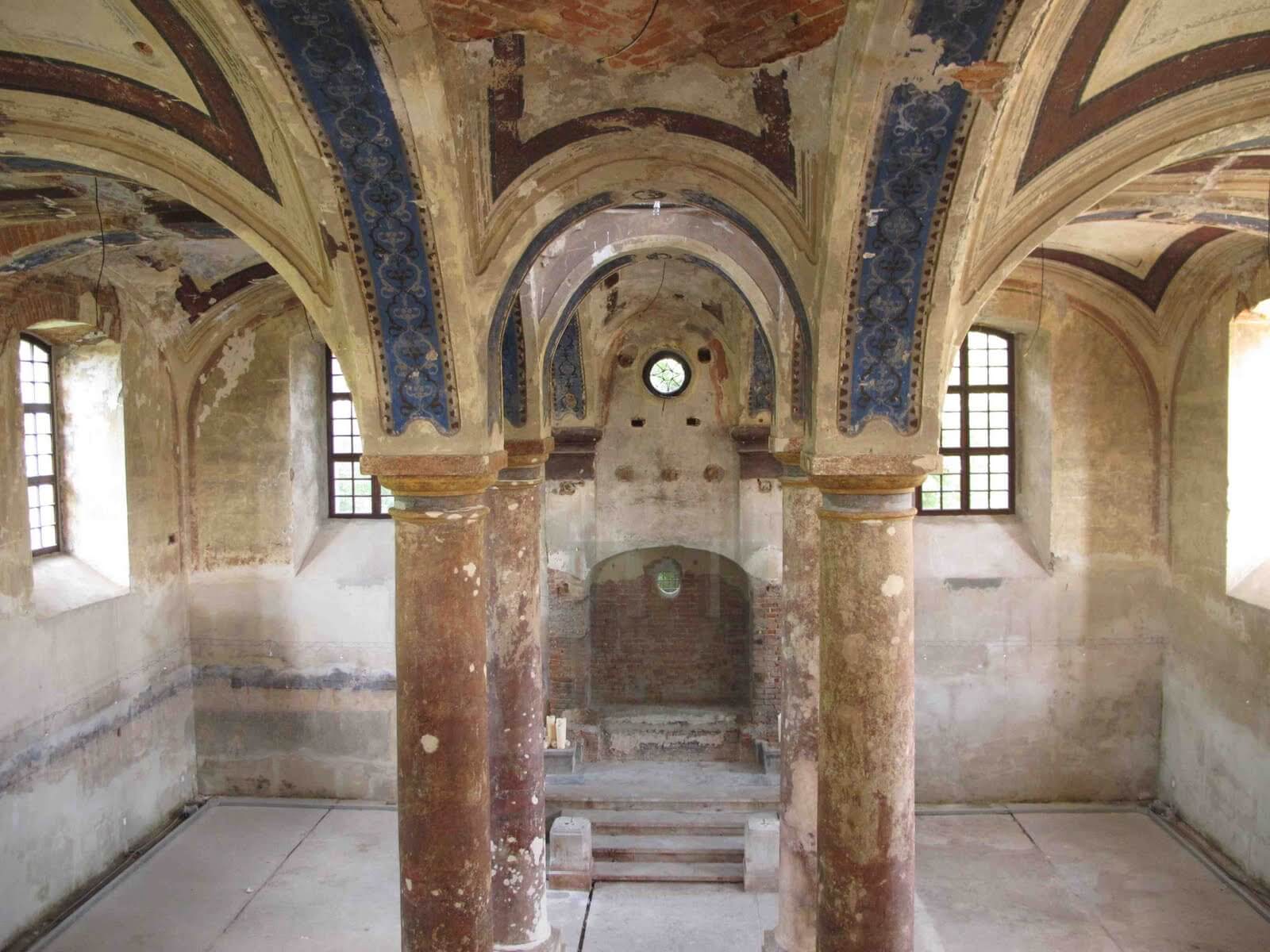The Power of Museums: Preserving Heritage, Interpreting Past, Shaping Identity
04.08.2017
Center for Urban History, Lviv
The workshop was a part of the curriculum of the Summer School "Connecting (to) Histories: Engaging with the Urban Pasts and Displaying Jewish Heritage" (July 10 – August 4, 2017).
The workshop provided students with the opportunity to develop а museum exhibition and to experience first-hand the key processes involved in creating historical exhibitions, as well as to formulate independent ideas and translate them into specific music models. Recognizing the fact that many museums in Ukraine are struggling to connect with their audiences and operating under an outdated 20th-century model, the Workshop aimed to encourage students and young museum professionals to use innovative approaches for engaging with the public and to present inclusive multi-faceted narratives in the exhibitions.
Lviv, a city with a rich multi-cultural and multi-ethnic past, provided an advantageous setting for the Workshop dedicated to studying diverse narratives and celebrating common heritage. The students applied critical thinking in practice while connecting historical facts, objects, and cultural arguments with broader theoretical concepts introduced in readings and discussed in class. The rise of interest in urban life across the globe presents city museums with a great opportunity to thrive alongside social change. The Workshop explored ideas for reinforcing the power of local museums and examined how the cross-cultural history of East-Central Europe is being informed by museums in the region.
In today’s world, museums, in addition to being repositories for collecting, preserving, and displaying cultural heritage, are also influential institutions of social, political, and economic significance. Historical museums are instrumental in ensuring a full and honest presentation of the past. While museums provide a physical foundation for educating about the past, they also assist in validating ideas about contemporary society and shaping a vision for its future. Museums take on a particularly significant role in the times of a search for new national identities and have the potential to open long-overdue debates about contentious chapters in history and the pressing issues of our time.
The major goal of the Workshop 2017 was to learn about the complex process of creating museum exhibitions. The Workshop consisted of two parts: theoretical and practical. The theoretical course included lectures and seminars concentrating on Museum Studies with a focus on historical museums. The course addressed museums’ many functions, ever-evolving public demand, current challenges, and newly available technological resources.
The practical part involved hands-on work with two local museums: the Lviv Historical Museum and the Museum of the History of Religion. Students exercised essential skills required for creating effective exhibitions: evaluated existing exhibits, discussed them with the museum staff, analyzed the community needs, defined available resources, generated a concept and compiled content for the exhibition, researched primary sources, designed displays, selected materials and wrote exhibition texts.
For the Lviv Historical Museum, students were tasked to evaluate the current exhibition. The curator of the Museum’s exhibition dedicated to the History of Ukraine in the 19th-20th Centuries (now called "History of Western Ukraine") provided students with a guided tour throughout nine galleries of the exhibition, and afterwards, discussed plans for the upcoming renovation of the museum, challenges of renovating a building from the UNESCO World Heritage List, and the future fundamental remaking of the exhibition content. This museum exposition became a practical case that the participants learned how to work on the concept of the exhibition, its visual presentation and audience.
For the Museum of the History of Religion, students were tasked with developing a concept for a new exhibition at the Museum’s additional exhibition space located in the historic center of Lviv. Working as a team, the students drafted a visual presentation that outlines the central themes for the proposed exhibition and reflects their ideas for the optimal use of the available museum space. In order to locate a considerable volume of historical materials within a limited time, the Workshop participants worked in separate groups searching for documents, statistical data, photographs, maps, newspapers, film footage, oral history, literary references, etc.
The Workshop Results:
Exhibition evaluation and practical suggestions for the exposition "History of Western Ukraine in the 19th-20th Centuries" in the Lviv Historical Museum.
The students analyzed the exhibition's narrative, visual content and descriptions of photographs, used archival materials. An important part of the analysis was the exhibition space and the accessibility of space for a wide audience, the designed format of the exhibition and interaction between the museum and its audience.
The exhibition proposal for the Lviv Museum of the History of Religion branch on Staroyevreiska Street.
The students presented the concept and summarized content for the exhibition titled: One Street - One Century. The Jewish Quarter in Multicultural Lviv.The proposed conceptsuggests to present Lviv's turbulent 20th-century history as reflected in everyday life through the lens of people from all walks of life belonging to various social groups (aim: to move beyond politics and ethnic tensions). One street serves as a metaphorical measure of history - in both senses of time and space, and as a representative sample of Lviv’s multi-cultural fabric. Given the historical background of Staroyevreiska Street as an intersection of several ethnic communities, this Museum’s space could serve as a designated area for exhibitions dedicated to the multi-ethnic history of Lviv. Taking in consideration the exhibition's location on Staroyevreiska Street, the narrative highlights the Jewish heritage of pre-WWII Lviv. The proposed exhibition includes several media programs, e.g. an interactive map of the former Jewish quarter, created by the Lviv Center for Urban History. The storyline consists of four thematic Galleries: Pre-war years, Religion, WWII, Post-war amp; today's Lviv, and underlines the radical transformation of the multi-ethnic, multi-religious, and multi-cultural European metropolis in the aftermath of the Second World War.
Tutors:
Vadim Altskan
a historian specializing in East European, Balkan, and Jewish history, currently serving as the Project Director for the International Archival Programs at the U. S. Holocaust Memorial Museum.
Ludmila Gordon
a museum exhibition developer and researcher specializing in cultural and political history, with over twenty years of experience in developing international collections and exhibitions.
Credits
Image Gallery by Iryna Sereda


